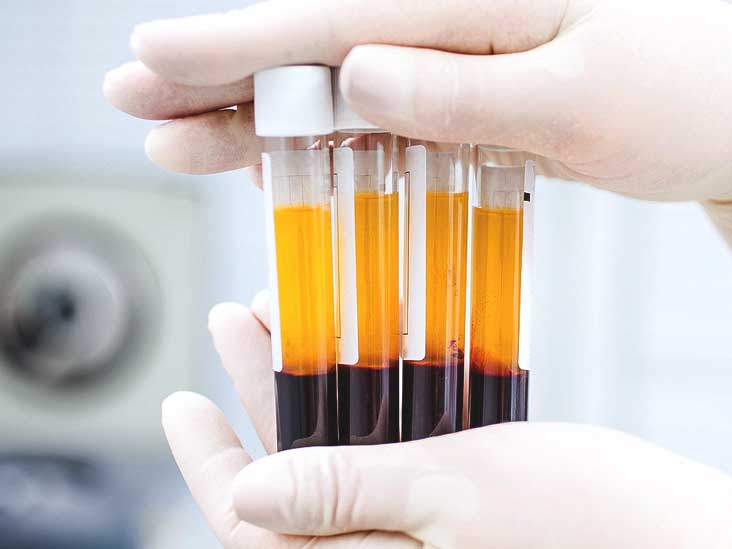Table of Contents
Platelet-rich plasma therapy offers a drug-free way to treat joint and tendon injuries. Therapy is also gaining popularity in cosmetology and trichology. Still, as a rather new therapy, PRP has moderate to high prices. Thus, the question arises is PRP covered by insurance?
In this article, we explain how much the therapy costs and how to get reimbursement for PRP therapy.
What is Platelet-Rich Plasma Therapy?
Platelet-rich plasma is a substance derived from human blood. Platelets are blood particles responsible for blood clotting, tissue repair, and regeneration stimulation. When the patient undergoes PRP therapy, the doctor takes the patient’s blood sample and puts it into a centrifuge to separate platelets from the blood.
The platelet-enriched plasma contains five times more platelets than human blood. Then the substance is injected into the injured tissue. Platelets boost the secretion of growth factors in the tissue, stimulating our body to heal itself.

PRP therapy helps to reduce pain and inflammation in the knees and elbows. PRP injections decrease the time for tendons to recover. The therapy can also postpone or prevent operations for patients with joint injuries.
How much does PRP therapy cost?
PRP therapy cost is formed under several factors. The procedure involves using medical devices and professional assistance. Each healthcare provider can bill for blood sampling and PRP preparation differently. Usually, patients pay for each injection. Thus, the price for one PRP injection can vary from USD 400 to USD 1,500.
Typically, patients with tendon or muscle injuries require 2 PRP injections carried out 3-4 weeks apart. Injured joints require 2 to 3 injections carried out 1-2 weeks apart. Therefore, PRP therapy costs from USD 800 to USD 4,500.
Can I get insurance and reimbursement for PRP?
Is there PRP covered by insurance? The answer is complicated. PRP treatment is still under investigation of its efficacy, that’s why it’s hard to find an insurance provider who’ll cover PRP in full. Insurance companies refuse to reimburse PRP injections because of insufficient testing. Besides, clinics bill their patients as a fee-for-service procedure when providing PRP therapy. PRP therapy needs more research to get into an insurance coverage plan. Until PRP doesn’t receive enough scientific support, patients will have to pay the full price for the therapy out of their pockets.
However, it might not take long as a vast number of ongoing studies discover more evidence of positive PRP outcomes. Also, some clinics provide good discounts for this procedure.
How to receive PRP injection insurance coverage
PRP advocates believe PRP can prevent surgical operations for many patients. So, they do their best to get PRP therapy included in the insurance plans of different providers. Currently, there’s resistance among traditional practitioners, because accepting PRP may reduce the number of surgical procedures. Scientists who suggest PRP be legally approved, are working on:
- Collecting systematic reviews on PRP effectiveness.
- Gathering feedback from therapists who use PRP and value its benefits.
- Convincing universities to perform PRP research,
- Promoting PRP as a cost-effective and safe procedure for many patients.
The insurance industry is hard to convince in covering medications, that have not been tested enough. Still, PRP advocates push the idea of PRP helping prevent and treat many injuries. Besides, this idea is backed up by many studies. Seeing successful examples of PRP therapy, insurance providers may change their opinion and add PRP to coverage.
Given that most insurance companies cover corticosteroids, which have serious side effects, PRP may be acknowledged quickly enough as it has no severe side effects. Some Blue Cross Blue Shield Association insurance companies already cover PRP therapy for some types of injuries, so there’s hope other organizations will follow their lead.

Currently, people who suffer from joint pain have to pay for PRP out of their pockets. PRP needs more research to be recognized as reliable and safe. Until then, the medical community won’t fully accept PRP therapy and insurance providers will be reluctant to add PRP to their insurance plans.
The future of PRP therapy
PRP therapy has already shown its advantages over traditional osteoarthritis therapies such as hyaluronic acid and corticosteroids. Clinical studies, conducted in China opted over 1,000 subjects to compare PRP to other osteoarthritis medications and resulted in absolute PRP prevalence over ozone and corticosteroids.
Although corticosteroids and hyaluronic acid injections for injured joints are widely used in the US, these drugs cause tissue disruption and often lead to surgical intervention.
Unlike hyaluronic acid and corticosteroid injections, PRP has no destructive effects on tissue and naturally promotes tissue regeneration. PRP doesn’t cause allergies or rejection because it consists of the patient’s blood.
World-class athletes use PRP for wound healing and muscle recovery and admit its positive effects on tendons, ligaments, and joints. Platelet-rich plasma market size exceeded USD 476 million in 2020 and is projected to increase by 12% at CAGR by 2028.
This number projects people’s interest in therapy. Still, patients have to pay out of patients pockets with no insurance coverage.
Insurance companies should consider scientific evidence and people’s interest and revise insurance conditions. Besides, adding PRP to insurance plans will save insurance providers approximately USD 87 million per year. This sum usually is spent on covering knee surgeries. When PRP treatment procedures will be standardized and scientists will conduct more studies, insurance reimbursement for PRP will become real so people can obtain its benefits.
Is PRP eligible for you?
PRP is a prominent treatment that promotes natural healing processes in our bodies. Therapists use patients’ blood to create PRP injections, so no medications are required.
Some insurance companies, such as Blue Cross Blue Shield Association residents already cover PRP. We hope, more and more companies will also make PRP covered by insurance. The therapy is suitable for most people, so if you’re interested in starting PRP therapy but have more questions, contact our specialists and receive detailed consultation.

Dr. Mill has over thirty years of experience working as a thyroid specialist and hormone expert in a US clinic. He is passionate about developing his knowledge and confirming his practice.

